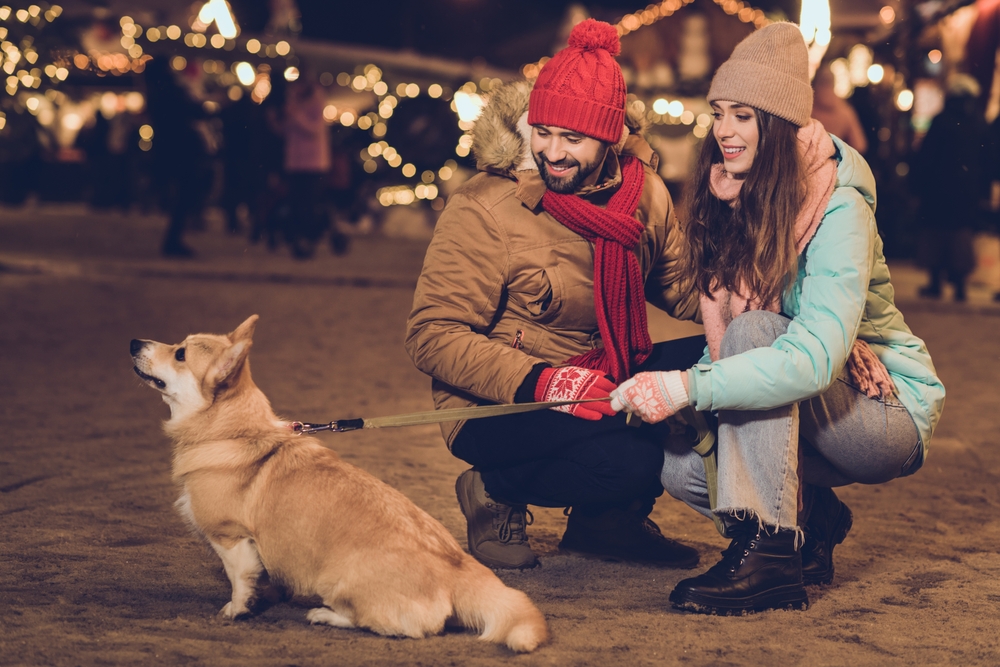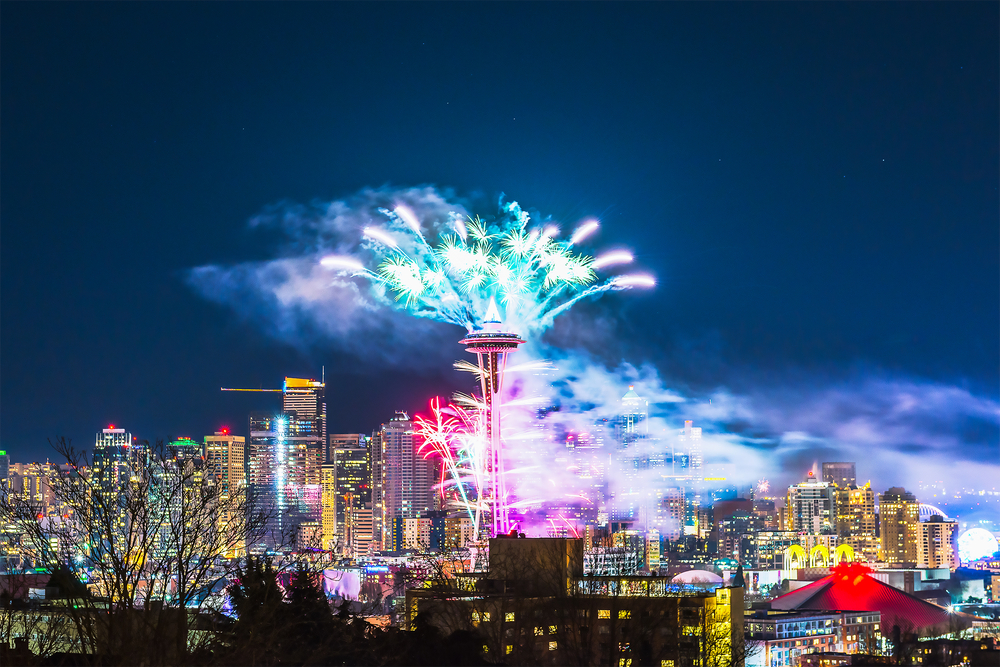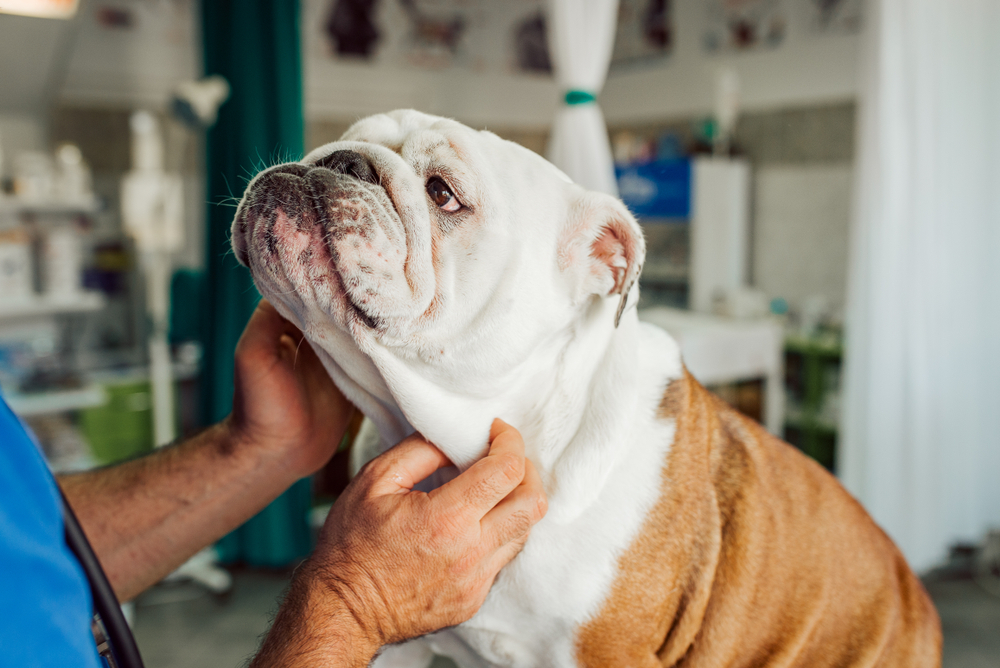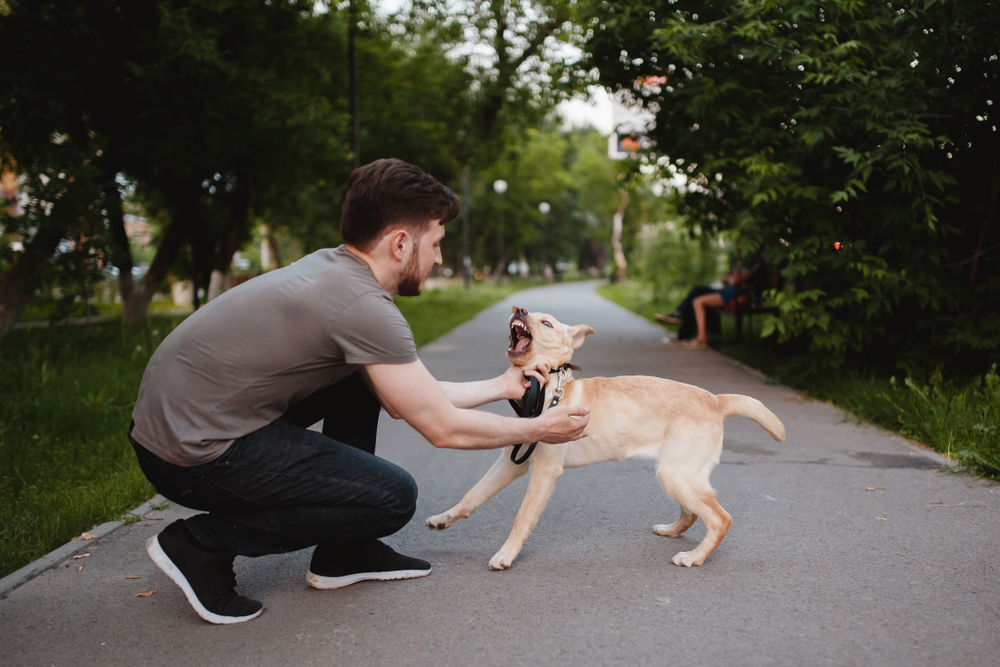Tips for Keeping Dogs Safe During Fireworks Celebrations

What you hear as a moment of joy, your dog may experience as chaos. Imagine sitting in your living room when the walls begin to shake, the lights flicker with no pattern, and thunder cracks out of nowhere again and again with no sign of stopping. You can’t speak the language, and no one tells you what’s happening. You just feel it: danger.
You’re not alone in this experience. According to a 2025 survey, 67% of dog parents say their pets are afraid of fireworks. And when fear turns to panic, even the most loyal, well-trained companion can bolt through windows, scale fences, or dig under gates just to escape what they can’t understand.
This isn’t just about anxiety it’s about safety. And in those moments when the sky is ablaze and the ground seems to tremble, your dog will look to one place for calm and reassurance: you.
Why Fireworks Feel Like a Warzone to Dogs
Dogs live in a world of heightened senses. Their ears catch sounds we barely notice. Their noses detect emotions. Their eyes are tuned to movement more than detail. So when fireworks erupt loud, unpredictable, and everywhere at once it’s not entertainment for them. It’s sensory overload. It’s chaos.
For dogs, fireworks don’t follow any natural pattern. There’s no warning like the rumble of thunder before a storm. Fireworks just happen abruptly, violently. One moment everything is calm, the next, the world is cracking open with blinding flashes and deafening bangs. To your dog, this doesn’t feel like celebration. It feels like an ambush.
Dr. Jamie Whittenburg, a veterinarian and director of Kingsgate Animal Hospital, explains that dogs can’t contextualize the noise. “They don’t know where the sounds and lights are coming from, and they have no way to escape. Dogs can’t understand if these things are threatening their safety.” And when their survival instinct kicks in, logic disappears. All they know is: run, hide, or freeze.
This kind of fear isn’t just behavioral it’s physiological. The fireworks activate a fight-or-flight response. Adrenaline surges. Cortisol levels spike. Heartbeats race. This is what makes fireworks anxiety more than just a “bad reaction.” As Karishma Warr, dog behaviorist and co-founder of Calm Canine Academy, puts it: “Firework anxiety is a genuine phobia. It’s a panic disorder, and it’s vital that you treat it as such.”
🎆🐾 Fireworks & Pets Don’t Mix 🐾🎆
— LA County Sheriffs (@LASDHQ) July 2, 2025
While fireworks light up the sky, they can terrify our four-legged family members. Every year, shelters report a spike in runaway pets after fireworks shows.
You can help prevent that.
✅ Keep them indoors – Secure windows & doors.
✅… pic.twitter.com/PS4y8XwjSy
What’s more, many dogs carry the scars of early experiences. A traumatic event a firework exploding nearby, a loud reprimand that coincided with a popping sound, a harsh noise during crate training can leave a permanent association in a dog’s memory. Others never had the chance to learn that loud sounds are safe. Puppies not exposed to diverse noises in those early, critical weeks are more likely to grow into fearful adults. And in multi-dog homes, fear can even be contagious. If one dog panics, the rest often follow.
Certain breeds are also naturally more prone to sound sensitivities. Research has shown that dogs like Cairn Terriers and Corgis are more likely to be frightened by fireworks, while Labradors and German Shepherds may be less reactive. But no breed is immune. Even the most social, confident dog can crumble under the weight of those booming sounds.
The real tragedy is what fear drives dogs to do. In a panic, they may chew through doors, leap through windows, dig under fences, or flee miles from home. Shelters across the country report July 5th as their busiest day of the year overrun with pets that tried to outrun the noise, only to get lost, injured, or worse.
This is why understanding your dog’s fear isn’t just about being a good pet parent. It’s about being a guardian when they’re at their most vulnerable. Your dog doesn’t know it’s just fireworks. But they do know what safety feels like and that’s you.
What to Do Before the Fireworks Begin

The best time to protect your dog from fireworks isn’t when the sky lights up it’s long before the first boom ever hits. Once the panic has started, you’re no longer preventing anxiety, you’re managing the fallout. And when it comes to fear, prevention is always the gentler path.
Preparing in advance gives your dog a fighting chance to feel safe, calm, and grounded. Here’s how to set the stage for peace before the chaos begins.
Tire Them Out, Body and Mind
An exercised dog is a calmer dog. Plan a long walk, a hike, or even a playdate with their favorite pup friend earlier in the day. The goal is to burn off nervous energy and build up a natural desire to rest. Mental enrichment helps too training sessions, food puzzles, or hide-and-seek with treats can go a long way in soothing the mind. A dog who’s fulfilled is less likely to spiral when stress hits.
Feed and Potty Early
Time your dog’s dinner and bathroom break well before sundown. Fireworks often start around dusk, and a scared dog may refuse to step outside once the noise begins. Ensuring they’ve eaten and gone potty removes an additional layer of discomfort or risk.
Create a Calm Zone
Choose a room or space in your home that’s quiet, secure, and away from windows. This is your dog’s sanctuary. Set it up with their favorite bedding, toys, and even some background sound whether that’s calming music, a white noise machine, or even a TV. Covering a crate or lowering the lights can create a den-like comfort zone. The idea is to buffer the sensory input as much as possible.
Make Sure They Can’t Escape
Double-check doors, gates, and windows. Fear can make dogs attempt things they’ve never done before jumping fences, scratching through screens, breaking through glass. If you have to take them out during the day, use a secure harness with a double leash for added safety. And never leave them in the yard once dusk approaches even if they usually love it there.
Update Their ID and Microchip Info
Even the best-laid plans can go sideways. Make sure your dog’s collar has an up-to-date ID tag and that their microchip information is registered correctly. If they were to bolt, these small details can make the difference between being reunited quickly and a long, heartbreaking search.
Prepare for Calming Aids
If your dog has shown anxiety in the past, this is the time to prepare their calming tools not 10 minutes before the fireworks start. Anxiety vests, calming chews, pheromone diffusers, or prescribed medication from your vet should all be on hand, tested, and ready. Every dog is different. For some, it might be a Thundershirt and frozen peanut butter KONG. For others, it’s medication and a quiet, dark room.
Practice Desensitization (Long-Term Strategy)
For dogs with deep-seated fear, desensitization to firework sounds takes time but it works. Play low-volume firework recordings during feeding or playtime months in advance, gradually increasing volume only if your dog remains calm. It’s not an overnight fix, but consistent exposure can rewire your dog’s relationship to the sound.
Tell Your People
If you’re going out, make sure whoever’s staying with your dog knows the plan. Share instructions, safe spots, and what works best for your pup. The goal is to reduce surprises and keep routines steady.
How to Help Your Dog During the Fireworks

When the sky begins to erupt and the ground seems to vibrate, your dog is no longer in a logical state. The fear has already arrived. Their ears are pinned back. Their body’s tense. Their instincts say: run, hide, survive.
In these moments, your role isn’t to train it’s to comfort, anchor, and protect.
First, stay calm.
Your energy matters more than you know. Dogs read us like an open book. If you’re panicking, rushing, or raising your voice, it confirms for them that something is wrong. Your job isn’t to “fix” the fear but to be the steady presence that reassures them the world hasn’t collapsed. Speak gently. Move slowly. Breathe deep because they will follow your lead.
Let them choose where to be.
Some dogs want to be by your side. Others want to hide under the bed or in their crate. Both responses are valid. Don’t force them out of their hiding spot or try to make them “face their fear.” If they’ve found a space that feels safe, honor it. You can sit nearby, quietly offering your presence like a lighthouse through a storm.
Use noise to fight noise.
Turn on a white noise machine, a fan, or calming classical music. Sound buffering won’t eliminate the explosions, but it can soften the edges. If your dog’s safe space is a crate, drape a thick blanket over it (making sure there’s ventilation) to muffle the bangs and hide the flashes. Some dogs find great relief in this kind of den-like insulation.
Offer a distraction—on their terms.
A frozen peanut butter KONG, a favorite chew, a snuffle mat with treats hidden inside these tools can help engage your dog’s natural soothing behaviors like licking, chewing, and sniffing. But don’t insist. If they ignore the toy or walk away, that’s okay. You’ve offered. Let them decide what helps.

Use calming aids if appropriate.
If you’ve planned ahead with your vet, this is the time to use any prescribed anti-anxiety medications or calming supplements. Pheromone diffusers or collars (like Adaptil®) can also emit comforting scents similar to those of a nursing mother. If your dog responds well to a pressure wrap or vest, like the ThunderShirt®, put it on before the fireworks start to give them time to adjust.
Don’t hold back comfort.
There’s a persistent myth that comforting a frightened dog reinforces fear. That’s false. Comfort doesn’t create anxiety trauma and panic do. If your dog seeks closeness, give it freely. Stroke their back slowly, talk to them in low tones, and let them know they’re not alone in this. As behaviorist Karishma Warr says, “If your dog is asking for reassurance, there’s nothing wrong with quietly soothing them with some cuddles.”
Don’t punish or correct. Ever.
Shaking, barking, pacing, hiding these are expressions of fear, not misbehavior. Scolding a dog in distress only deepens the trauma and damages trust. Your dog isn’t being dramatic. They’re surviving the only way they know how.
Monitor for signs of severe distress.
If your dog is hyperventilating, excessively drooling, or attempting to escape through windows or doors, it may be a true panic episode. Stay physically close. Use gentle restraint if necessary to prevent injury. This level of fear often warrants a conversation with a veterinary behaviorist for long-term solutions.
Remember: the goal isn’t to erase the fear overnight it’s to get through the moment with compassion and safety. Your calm presence, your patience, and your willingness to sit with your dog through their storm is the greatest comfort you can offer.
Professional and Medical Support

If your dog’s fear of fireworks goes beyond mild discomfort if they tremble uncontrollably, try to escape through windows, or shut down completely then you’re not dealing with a behavioral quirk. You’re facing a genuine phobia. And just like people with anxiety disorders, dogs need more than warm words and soft blankets to heal. And that’s okay. There is no shame in needing help.
Start with your veterinarian.
Your vet knows your dog’s history, temperament, and health status. They can help rule out any underlying conditions that may worsen anxiety, like age-related cognitive decline or chronic pain. More importantly, they can guide you through the world of safe, effective treatment options.
In severe cases, your vet may prescribe anti-anxiety medication designed specifically for noise phobias. One such option is Sileo®, the first FDA-approved treatment for canine noise aversion. Studies show that 69% of dog owners report significant improvement using medication during fireworks. Unlike sedatives, these medications are designed to reduce panic without sedating your dog into helplessness.
Supplements and natural aids can also play a role, especially for mild to moderate cases. Calming chews containing L-theanine, melatonin, or tryptophan (like VetriScience® or Nutramax® brands) can take the edge off anxiety without altering your dog’s personality. Pheromone diffusers or collars (such as Adaptil®) mimic the soothing scent of a mother dog, helping to create a sense of emotional safety.
If the panic runs deep especially if your dog has a history of trauma it may be time to call in a veterinary behaviorist or certified trainer who specializes in fear-based behaviors. Professionals like these are trained to guide dogs through behavior modification protocols such as desensitization and counterconditioning. Done properly, this kind of therapy rewires your dog’s emotional response to noise transforming terror into neutrality, or even calm.
But know this: it takes time. In many cases, months of slow, consistent exposure to carefully controlled sound recordings. Behaviorist Karishma Warr calls it “more therapy than training,” because that’s what it is emotional healing, not obedience drills.
Early intervention matters.
As Dr. Mindy Waite notes, the longer a dog lives with untreated noise phobia, the harder it becomes to treat. The brain gets “wired” for fear, and future triggers become more intense. What begins as firework anxiety can eventually spill over into fear of thunderstorms, construction noises, or even household sounds.
Preventing the Worst-Case Scenario

nimal shelters across the country consistently report July 5th as their busiest day of the year overflowing with pets that escaped during fireworks celebrations. Some are injured. Some never return home. And sadly, many are found too late. That’s why no matter how well-trained or “laid-back” your dog may be, you must prepare for the worst-case scenario. Because the moment fear sets in, even the calmest dog can become unrecognizable. Here’s how to protect your dog from that moment:
Keep your dog indoors. Always.
Even if your dog is usually okay outside even if they’ve never tried to run fireworks can change everything. Bring them inside before dusk. Don’t wait for the booms to start. And once inside, check doors, windows, and gates. Secure everything. You’re not just locking up your home you’re locking out panic.
Never leave them home alone during fireworks.
If you’re heading to a celebration, leave your dog with someone who understands their needs. Better yet, stay home with them if you can. Dogs left alone during fireworks are far more likely to panic, destroy property, injure themselves, or escape in desperation. Even a normally confident dog can unravel without you there to anchor them.
Use a double leash and secure harness if you must go outside.
If your dog needs a bathroom break during fireworks, double up one leash attached to a well-fitted harness, the other to a collar. It might sound excessive, but if one leash slips, the second becomes your lifeline. And don’t assume your backyard is safe. A terrified dog can jump or dig in ways you’ve never seen.
Make sure ID tags and microchips are up to date.
This is your dog’s ticket home if the worst happens. Ensure their collar has an ID tag with a current phone number. And if your dog is microchipped, confirm your registration information is accurate. A microchip without updated info is like a map with no destination.
Create a visual safety net.
Tell your neighbors, family, and anyone in your household what to do if your dog escapes. If your dog has poor recall or is easily frightened, make sure your search team knows not to chase, but to gently lure. Leave out their bed, food, water, and an item with your scent to help guide them back.
When the Sky Booms, Be Their Shelter
Fireworks come and go. But the fear they ignite in a dog’s heart can linger long after the night is over. While we marvel at the lights above, they tremble beneath our tables, hiding in corners, searching for something familiar something safe.
And that something… is you.
Your voice. Your presence. Your willingness to plan ahead, stay home, or simply sit beside them while the world gets too loud. That’s what makes all the difference. Because you don’t have to be a dog trainer or a veterinarian to be your dog’s hero. You just have to show up. Thoughtfully. Consistently. With love that listens and prepares.
It’s easy to think, “They’ll be fine.” Or, “It’s just noise.” But for many dogs, fireworks aren’t background noise they’re trauma. And trauma doesn’t ask for our permission. It just takes hold. Unless we meet it with intention.
So as the next celebration nears, ask yourself:
Will my dog feel safe tonight?
If the answer is uncertain, then it’s time to act.
Because in a world of unpredictable sounds and flashing skies, you can be the one thing they can count on.
Loading...

